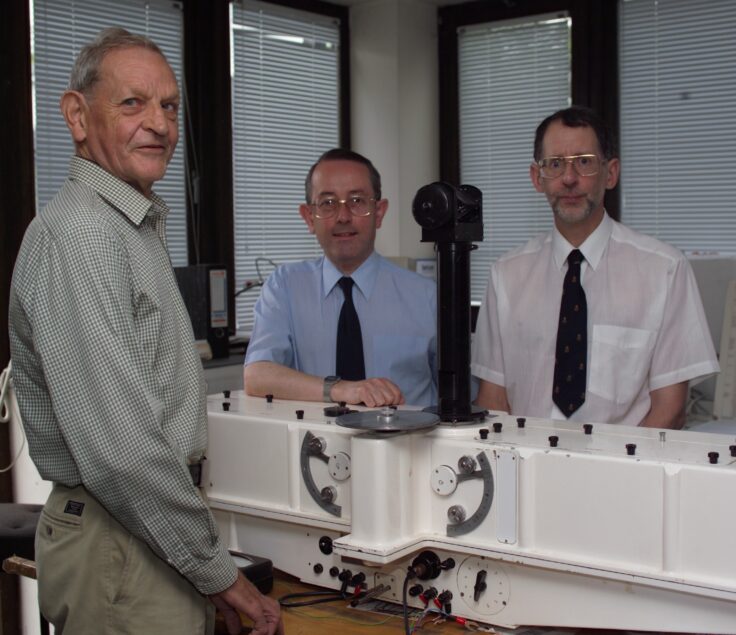The Future of Life Award, which honors those who take exceptional measures to safeguard the collective future of humanity, is announced today (16 September) on the International Day for the Preservation of the Ozone Layer. On this day in 1987, humanity took its first step toward avoiding climate catastrophe and saving the ozone layer, with the signing of the Montreal Protocol. The 2021 Future of Life Award goes to Stephen Andersen, Susan Solomon, and the late Joseph Farman, who helped make this the most successful international environmental treaty in history.
In 1985, Joseph Farman and colleagues at British Antarctic Survey made the most important geophysical discovery of the 20th century: the ozone hole above the Antarctic. Earth’s ozone layer protects us from the Sun’s harmful ultraviolet light, which could otherwise give us a sunburn in 5 minutes and cause massive agricultural damage. The discovery of the ozone hole provided a stunning confirmation of the Sherwood-Molina hypothesis that human-made chlorofluorocarbons (CFCs) were destroying the ozone layer, and much faster than predicted, which galvanized efforts to do something about it.
Jonathan Shanklin, British Antarctic Survey Emeritus Fellow, and part of the team who discovered the ozone hole, said,
“The 2021 ozone hole is nearing its largest and is still deepening. Thanks to the Montreal Protocol it won’t become as big as some of those in the 1990s. The Protocol is succeeding in reducing the amount of ozone depleting substances in the atmosphere, but because they are so stable we will continue to have ozone holes for another 50 years.”

In 1986-87, Susan Solomon led an Antarctic ozone research expedition. Her work both confirmed that CFCs caused the ozone hole, and showed that sunlit cloudtops catalyzed the ozone destruction process to be much faster. In the years that followed, both Farman and Solomon became effective public advocates for the development of the Montreal Protocol that their scientific work inspired.
Professor Guus Velders, a climate scientist at Utrecht University said, “Susan Solomon is a deserving recipient of the Future of Life Award. Susan not only explained the processes behind the formation of the ozone hole, she also played an active role as an interface between the science and policy of the Montreal Protocol.” MIT President L. Rafael Reif added: “All of us at MIT congratulate Susan Solomon on her Future of Life Award, in recognition of all she did to save the ozone layer – and thereby save civilization as we know it. Her pioneering research and advocacy for the Montreal Protocol stand as a model for how the world can face hard facts and collaborate creatively to tackle the global climate crisis.”
With the signing of the Montreal Protocol in 1987, the hard work of getting all stakeholders to agree on how to reduce CFCs began in earnest. Working at the Environmental Protection Agency (EPA), Stephen Andersen founded and co-chaired the Technology and Economic Assessment Panel (TEAP) for the Montreal Protocol from 1988-2012. Andersen’s tireless efforts brought together leaders from industry, government and academia to get this done in practice. His efforts played a critical role in making the Montreal Protocol successful.
Professor Ted Parson from the UCLA Emmett Institute on Climate Change and the Environment said, “For over a decade, Andersen brilliantly led the Montreal Protocol’s Technology and Economic Assessment Panel process. Andersen made the Montreal Protocol happen.” Emphasizing the importance of the Montreal Protocol, Astronomer Royal Martin Rees added, “In the face of threats to humanity’s future, we need to be think globally, rationally and long-term, empowered by technology. The story and success of the Montreal Protocol shows us that this is possible.”

In addition to preventing skin cancer deaths, ecosystem collapse and climate change, this treaty showed that international collaboration can overcome environmental challenges without sacrificing economic prosperity.
Dr. Jim Hansen, former Director of the NASA Goddard Institute for Space Studies and Director of Columbia University’s Program on Climate Science, Awareness and Solutions said, “In Farman, Solomon and Andersen we see the tremendous impact individuals can have not only on the course of human history, but on the course of our planet’s history. My hope is that others like them will emerge in today’s battle against climate change.”
Learn more about the ozone hole here: https://www.bas.ac.uk/about/antarctica/geography/ozone/
